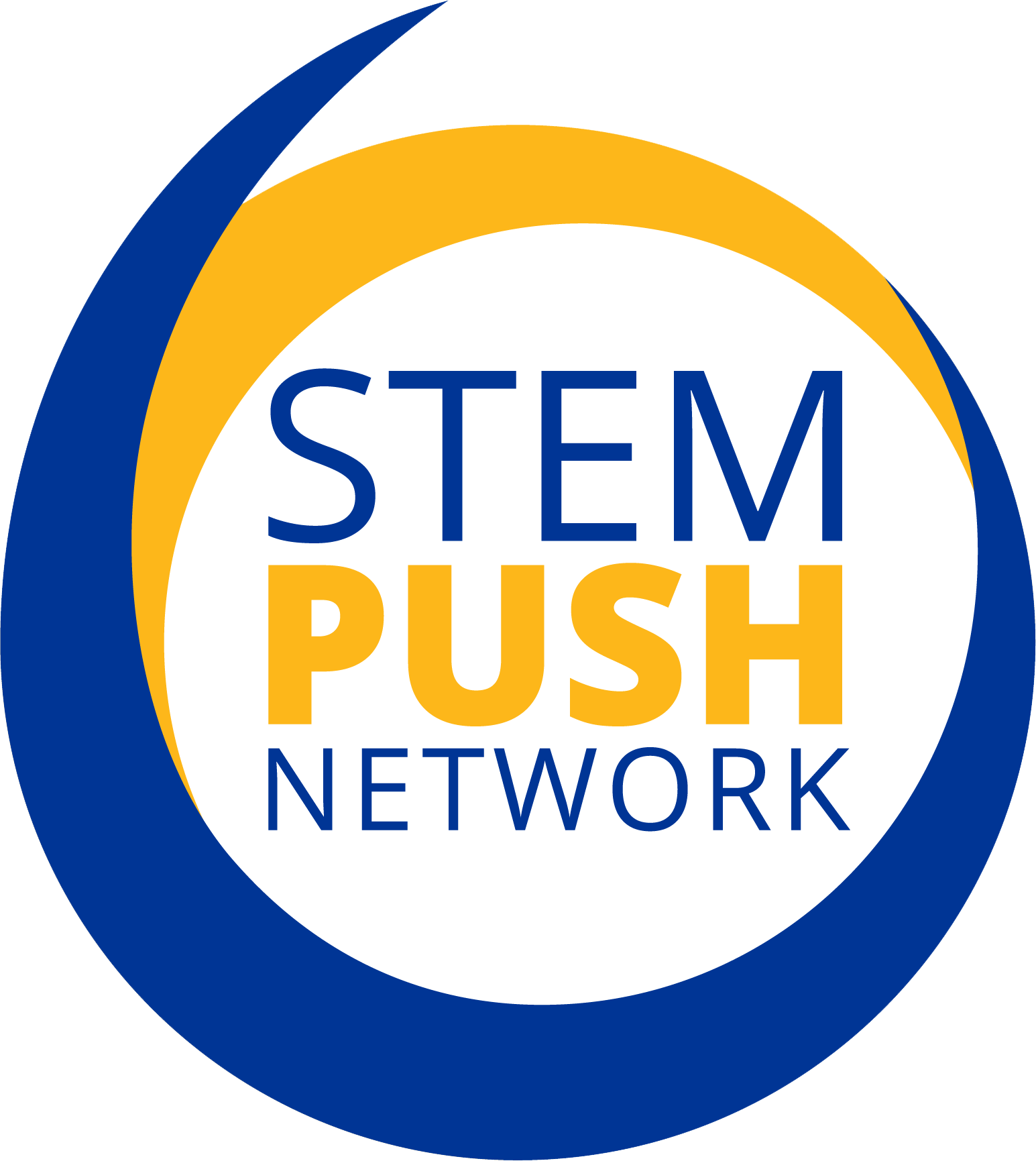Menu
Dedicate enough time and personnel.
There are many ways to leverage your ecosystem to support PCSPs, but they all require a dedicated investment of time and resources. You are the link that helps bring STEM stakeholders together to build a more equitable, accessible pathway for Black and Brown learners to pursue STEM. As you embark on deeper equity and admissions work, you should be prepared to dedicate your time (and possibly the time of other ecosystem members) to supporting PCSPs.
Draft a work plan.
STEM PUSH cohort ecosystems drafted work plans to organize and operationalize their tasks and responsibilities in the network. This is a best practice for any ecosystem engaging in similar work. Our ecosystem work plan template can help you brainstorm specific activities, metrics, and timing according to the same nine strategies in this playbook.Meet and communicate with PCSPs regularly.
Strong relationship building between ecosystems and PCSPs is core to the success of the STEM PUSH Network and related work. You should know and understand the fundamentals of your PCSPs’ programming and, if applicable, be aware of their activities within the STEM PUSH Network.Meet and communicate with PCSPs regularly, via email or meeting, ideally monthly or quarterly. Take time to review questions, needs, or potential opportunities to share their work with your ecosystem.
Encourage and reinforce your PCSPs. Make it clear that you and your ecosystem support their equity, admissions, and STEM PUSH work and that they can come to you for support or backing. In some cases, this may mean working more closely with programs than you typically do as an ecosystem or ecosystem lead.
The California STEM Network’s role in STEM PUSH brought them much closer to their PCSPs. Before STEM PUSH, they most often worked with programs’ parent organizations, convening and facilitating the sharing of best practices. STEM PUSH work enabled them to learn more about program operations and recruitment while exploring new engagement and partnership ideas.
Use ecosystem meetings to spotlight PCSPs, connect STEM PUSH to existing ecosystem priorities, and facilitate related conversations.
Your regular ecosystem meetings are a simple but effective way to uplift your PCSPs and the greater STEM PUSH Network. After you confirm your PCSPs, invite them to present at an ecosystem meeting; also give an overview of the STEM PUSH Network, its goals, and its progress to date.Invite PCSPs to give updates at subsequent meetings. You can also incorporate special guests from higher education to have conversations about STEM programs and admissions.
The NYC STEM Education Network invited PCSPs and the STEM PUSH team to present at a quarterly ecosystem meeting. They introduced the programs and the STEM PUSH Network and then facilitated a conversation between program leads and guests from higher education admissions.
Ultimately, this open, collaborative approach inspired the Ecosystem to create their own networked improvement community, so regional PCSPs outside of STEM PUSH can test change ideas generated by the network and benefit from findings.
Ultimately, this open, collaborative approach inspired the Ecosystem to create their own networked improvement community, so regional PCSPs outside of STEM PUSH can test change ideas generated by the network and benefit from findings.
Chicago STEM Pathways Cooperative used ecosystem meetings to discuss root causes of issues addressed by STEM PUSH, which helped their ecosystem better understand why they should attend to higher education STEM pathways, admissions, and equity.
The ecosystem also connected STEM PUSH to their existing priorities of increasing K-8 STEM curriculum and programming, reinforcing the role of parent engagement in student STEM interest, and developing higher education cultures that are supportive of Black and Brown students enrolled in STEM.
The ecosystem also connected STEM PUSH to their existing priorities of increasing K-8 STEM curriculum and programming, reinforcing the role of parent engagement in student STEM interest, and developing higher education cultures that are supportive of Black and Brown students enrolled in STEM.
Make connections to and between PCSPs.
Use the collective power of your ecosystem to make connections for, with, and to your PCSPs. Who else in your ecosystem (or other networks) should know about your PCSPs? Who else is engaged in similar equity-focused work?
The California STEM Network works on behalf of their PCSPs to facilitate connections. They introduce program leads to fellow ecosystem members and identify potential partners with common goals. They also connect their PCSPs to one another, offering opportunities to talk with their peers, learn where and how they're making progress, where they’re facing challenges, and what unique approaches each program takes to their STEM PUSH work. As a result, PCSPs connect with new potential partners who can help advance their work. PCSPs also identify potential partners to fill unmet needs or funders who can provide additional resources.
By serving as an active connector, the ecosystem helps build a deeper understanding of root causes and systems-level gaps that perpetuate underrepresentation in STEM – and the relationships needed to address these issues.
By serving as an active connector, the ecosystem helps build a deeper understanding of root causes and systems-level gaps that perpetuate underrepresentation in STEM – and the relationships needed to address these issues.
Connect with students who’ve participated in PCSPs to capture feedback and insight.
Connecting with program participants will help center student voice and experience in your STEM PUSH work. It will ensure those who have the most to gain from advances in equity are heard, represented, and involved in the change-making process.Consider hosting a listening session with your PCSPs and their students or help your PCSPs develop a student feedback survey. Use these tools to capture first-hand, regional specific data, stories, and/or examples about equity in STEM. Where or how have Black and Brown students encountered roadblocks in their STEM learning or career pathways? How have PCSPs helped? Where could they do more?
You can help programs share and compare student experiences at the ecosystem level to gauge progress toward STEM PUSH goals. This information may also be helpful in related policy or funding conversations.

